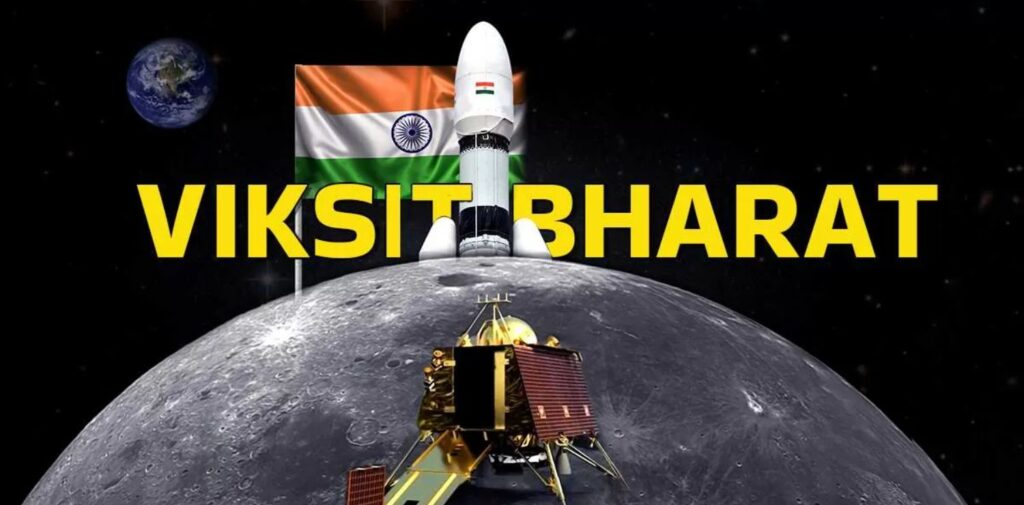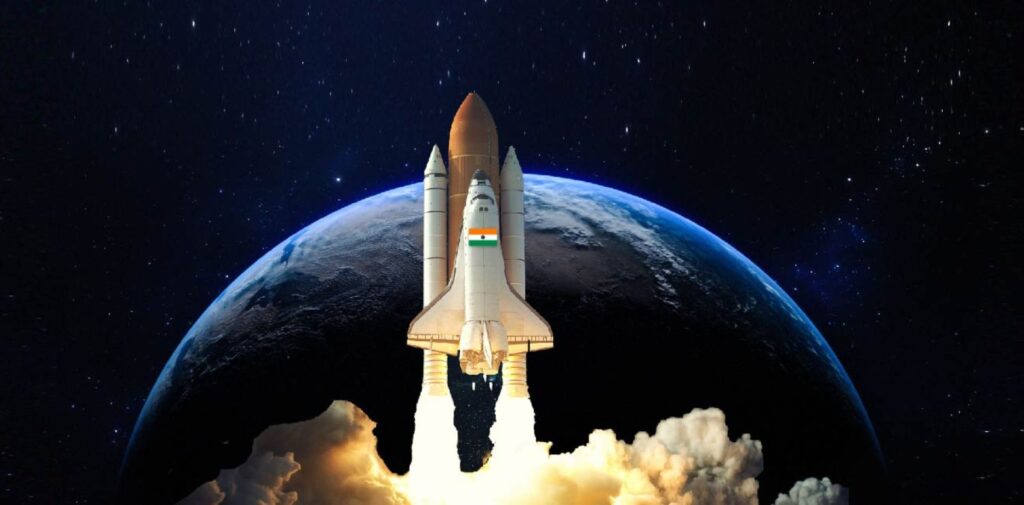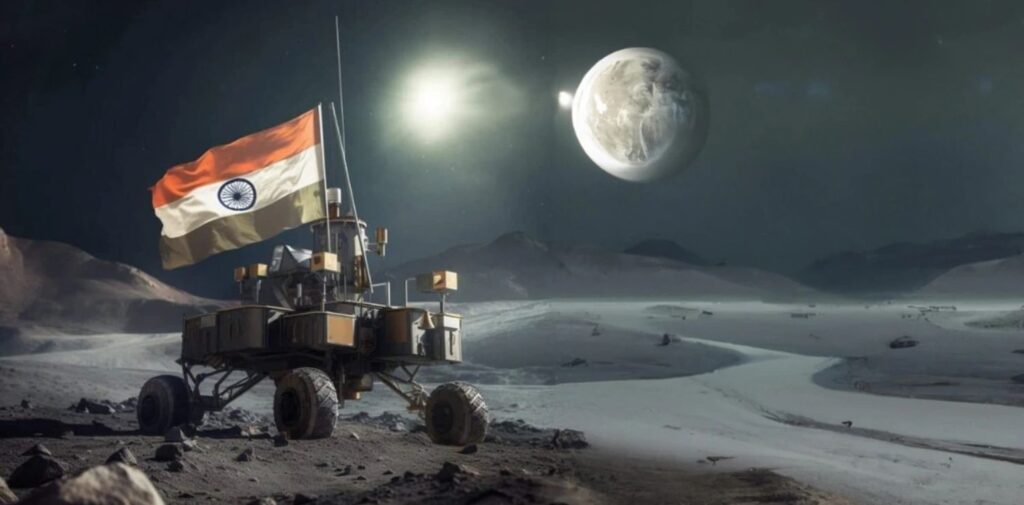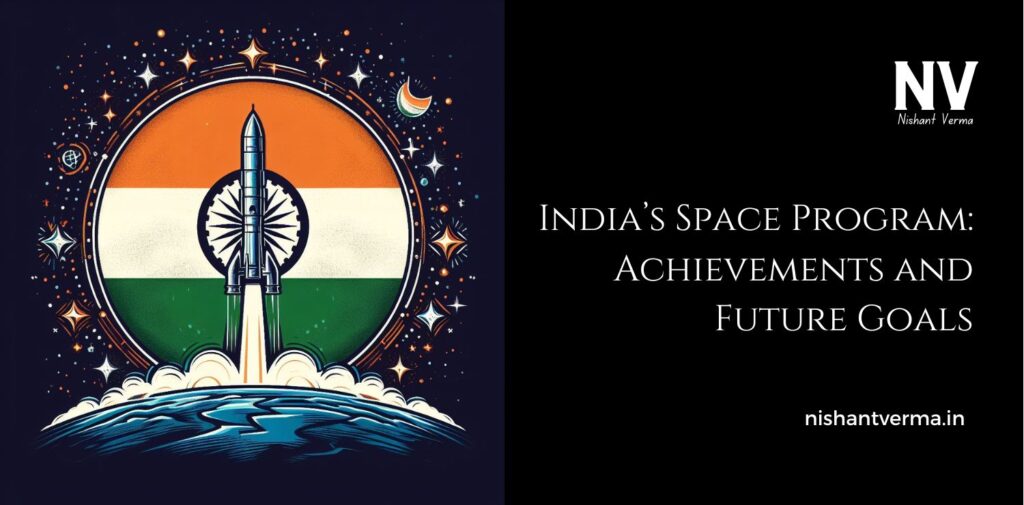India’s space program is one of the most amazing stories of success and growth in the country. Over the past several decades, India has made remarkable progress in space exploration, and today, it is one of the leading countries in space science. India’s space journey began with a dream, and it has reached far beyond what many could have imagined. Let’s take a look at how India has built its space program, the incredible achievements it has made so far, and the exciting goals for the future.

The Beginning of India’s Space Journey
India’s adventure in space exploration started with a humble beginning. The Indian Space Research Organisation (ISRO) was set up in 1969, led by Dr. Vikram Sarabhai, who is often called the “Father of the Indian Space Program.” Dr. Sarabhai’s vision was to use space technology to improve the lives of people in India. He believed that space technology could help in various fields like education, healthcare, and weather forecasting.
At first, India’s space program focused on launching small satellites and using them for practical purposes like communication and weather monitoring. With limited resources, India worked hard to develop its own rockets and satellites, and over time, it gained more confidence and expertise in the field.
Major Achievements of India’s Space Program
India’s space program has seen many incredible achievements. These accomplishments have made the country proud and helped it gain recognition worldwide. Let’s look at some of the biggest successes.
- Chandrayaan-1: The Moon Mission: In 2008, India launched its first mission to the Moon, called Chandrayaan-1. This was a major milestone for the country. The Chandrayaan-1 mission was India’s first mission to explore the Moon, and it made an important discovery. The spacecraft found water molecules on the Moon’s surface, which was a big surprise for scientists. This discovery made India a part of a select group of countries that have successfully explored the Moon.
- Mars Orbiter Mission (Mangalyaan): In 2013, India took another huge step by launching its mission to Mars, called Mangalyaan or the Mars Orbiter Mission. India became the first country in the world to successfully send a spacecraft to Mars on its very first attempt! This was a remarkable achievement for a country with limited resources, and it showed India’s growing strength in space exploration. The mission sent back valuable data about the Martian surface, weather, and atmosphere, which helped scientists learn more about the Red Planet.
- PSLV-C37: A Record-Breaking Satellite Launch: India’s Polar Satellite Launch Vehicle (PSLV) has become one of the most trusted and reliable rockets in the world. In 2017, India set a world record by launching 104 satellites in a single mission using the PSLV-C37 rocket. The satellites were launched for various countries, and this mission showed the world that India’s space program is capable of doing extraordinary things.
- India’s Navigation System: IRNSS: India also developed its own navigation system, known as IRNSS (Indian Regional Navigation Satellite System). This system helps provide accurate location and timing information to people in India and neighboring countries. It is similar to the GPS system used worldwide, but IRNSS is specific to India’s needs. This system plays an important role in navigation for vehicles, airplanes, and even in agricultural and defense sectors.
- Reusable Launch Vehicle (RLV): India has also been working on developing a Reusable Launch Vehicle (RLV), which could reduce the cost of launching satellites into space. This technology is similar to the one used by NASA, where rockets are reused instead of being thrown away after one use. In 2016, India successfully tested a model of its Reusable Launch Vehicle, which is expected to make space missions more affordable and sustainable in the future.

The Impact of India’s Space Program
India’s space program has had a huge impact on various areas of the country. By launching satellites and space missions, India has been able to improve the lives of millions of people.
- Better Weather Forecasting: India’s satellites provide crucial information about weather patterns, which helps farmers prepare for crops, reduces the damage caused by natural disasters, and even helps in predicting the arrival of monsoons.
- Telecommunication: Thanks to Indian satellites, millions of people can now access television, internet, and mobile phone services in even the most remote areas of the country.
- Disaster Management: Satellites play an important role in monitoring natural disasters like floods, cyclones, and earthquakes. They help in early warning systems and disaster management.
- Education and Research: Space technology has made it possible for schools and universities to access satellite images for research and learning. This has helped improve the quality of education, especially in remote areas.

India’s Future Goals in Space
India’s space journey is far from over. There are many exciting plans and goals for the future. Let’s take a look at what India hopes to achieve in the next few years.
- Chandrayaan-3: The Next Moon Mission: India is planning to launch its third mission to the Moon, called Chandrayaan-3. After the success of Chandrayaan-1 and the partial success of Chandrayaan-2, India is now working on sending a lander and rover to the Moon’s surface to explore it more deeply. Chandrayaan-3 is expected to be launched in 2023 or 2024, and it will focus on landing on the Moon and performing experiments to understand its surface and composition.
- Gaganyaan: India’s Human Spaceflight Mission: One of the most exciting projects in India’s space program is Gaganyaan, which aims to send Indian astronauts, called Gagannauts, into space. India plans to launch its first human space mission by 2024, making it only the fourth country in the world to send humans to space after the United States, Russia, and China. This mission will be a big step for India and will open up new possibilities for future space exploration.
- Exploring Other Planets: After the success of Mangalyaan, India has plans to send more missions to explore planets like Venus and even asteroids. The Indian Space Research Organisation (ISRO) is studying new ways to launch missions that can help discover more about other planets in our solar system.
- Space Research and Development: India will continue to develop new technologies to make space missions more efficient, affordable, and sustainable. The country is also working on building its space station, which will be a place for astronauts to live and conduct experiments for long periods of time. This is a very ambitious goal and could make India a global leader in space exploration.
Conclusion
India’s space program is a symbol of the country’s hard work, determination, and vision. Over the years, India has made remarkable progress in space technology and has shown the world that even with limited resources, it is possible to achieve great things. With plans for exciting future missions like Gaganyaan, Chandrayaan-3, and more, India’s space journey is sure to continue inspiring people around the world for years to come.
Through space exploration, India has not only expanded its knowledge of the universe but has also improved the lives of its citizens by using space technology in everyday life. The future of India’s space program looks very bright, and there is no telling how far it will go in the coming decades.
India’s story in space reminds us all that with vision, effort, and determination, anything is possible.




